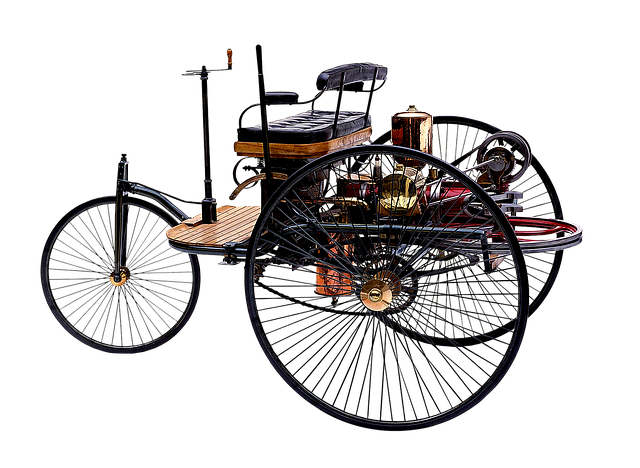Looking to register your car in California? This comprehensive guide walks you through every step, ensuring a smooth process. From understanding crucial registration requirements to gathering essential documents and navigating the DMV application process, we’ve got you covered. Learn about the importance of a dmv vin verification for accurate and efficient registration. Discover tips to streamline your journey, all tailored to California’s unique regulations.
- Understand California Car Registration Requirements
- Gather Necessary Documents for DMV Visit
- Perform VIN Verification: Steps and Tips
- Complete Application Process at the DMV
- Ensure Insurance Coverage Before Driving
Understand California Car Registration Requirements

Before registering your car in California, it’s crucial to understand the state’s specific requirements. The California Department of Motor Vehicles (DMV) mandates several key steps for new and transferred vehicle registrations, including a comprehensive vehicle inspection. This process involves a thorough check of various components, ensuring the car meets safety and environmental standards. One essential aspect is the DMV VIN verification, where the unique Vehicle Identification Number (VIN) is cross-referenced to confirm the vehicle’s history and authenticity.
Additionally, owners may opt for a mobile vin inspection or mobile vin verifier service, providing convenience by allowing the check to be conducted at your location. These services use advanced technology to perform the dmv vin verification, streamlining the registration process. Ensuring compliance with these requirements is vital to avoid delays and potential fines when registering your vehicle in California.
Gather Necessary Documents for DMV Visit

Before heading to the DMV, it’s crucial to have all the essential documents ready for a smooth car registration process. This includes your vehicle’s Registration Application (form DVF 140), which can be obtained online or in person. Other vital documents include your driver’s license, proof of insurance, and proof of identity such as a valid passport or state-issued ID card. Notably, the DMV requires a vin inspection to verify your vehicle’s unique identification number (VIN). This can typically be done by presenting the car itself for an on-site vin inspection or using a mobile vin verifier to provide the information remotely.
Remember to bring along any additional documentation requested based on your specific circumstances, such as proof of ownership if you’re transferring registration or paying off a loan. Having these documents readily available will help expedite the process and ensure that your California car registration is completed efficiently.
Perform VIN Verification: Steps and Tips

Before initiating the car registration process in California, performing a Vehicle Identification Number (VIN) verification is a crucial step. This involves checking the vehicle’s history and ensuring its authenticity, which is essential for safety and legal compliance. The process typically starts with obtaining the VIN from the vehicle, usually found on a plate located near the driver’s side door frame or on the dashboard. Then, you can take advantage of mobile vin verification services that allow you to complete this step conveniently.
To conduct the dmv vin verification, use an official online platform or contact the California Department of Motor Vehicles (DMV) directly. Input the VIN into their system and follow their instructions. They’ll cross-reference the data with national databases to retrieve information about previous owners, accidents, outstanding liens, or any other relevant details. Ensure you have all the necessary documents ready for a seamless process. Mobile vin inspectors can provide this service on-site, which is especially useful if you’re facing registration issues or buying a used car.
Complete Application Process at the DMV

To complete the car registration process in California, you’ll need to visit a DMV office or utilize their online services. The application process involves providing key documents and ensuring your vehicle meets all legal standards. One crucial step is the DMV vin verification, which confirms the vehicle’s identity using its unique Vehicle Identification Number (VIN). This process is typically done by submitting the necessary forms, including the Application for Title and Registration, along with proof of insurance, identification, and payment for fees.
For a more convenient approach, some services offer mobile vin verifier options, allowing you to complete the inspection remotely. The vin inspection ensures your vehicle’s history is clean and complies with California’s regulations. Once all requirements are met, the DMV will issue the registration certificate, making your car legally registered for road use within the state.
Ensure Insurance Coverage Before Driving

Before you hit the road in your newly registered vehicle, it’s crucial to ensure that you have the appropriate insurance coverage. California law requires all vehicles to be insured against liability and property damage. This means securing a policy that meets the state’s minimum standards for financial responsibility, typically $15,000 for bodily injury/death of one person, $30,000 for all injuries or deaths from an accident, and $5,000 for property damage.
To streamline the process, consider using a mobile vin verifier to perform a DMV (Department of Motor Vehicles) VIN verification. This service allows you to quickly check your vehicle’s history and ensure it’s in compliance with California regulations. A mobile vin inspection can help you avoid potential issues during future DMV visits or when applying for insurance.
Registering a car in California involves understanding state requirements, gathering essential documents, completing a VIN (Vehicle Identification Number) verification process through the DMV’s vin verification system, and submitting applications. Before hitting the road, ensure your vehicle has valid insurance coverage to comply with legal standards. By following these steps, you’ll be well on your way to becoming a California vehicle owner.
